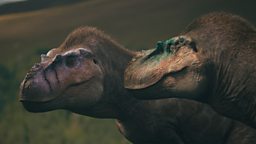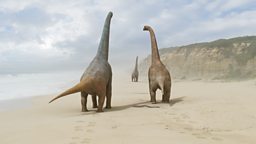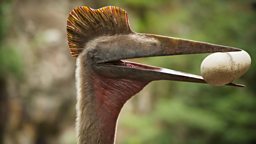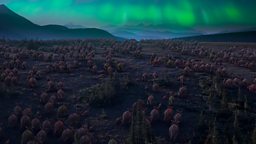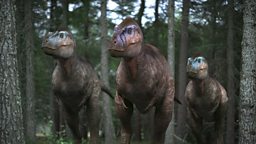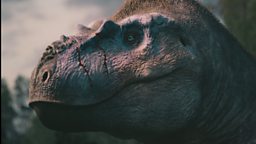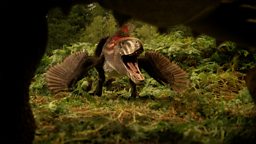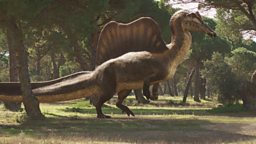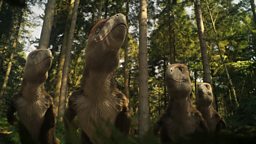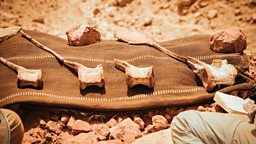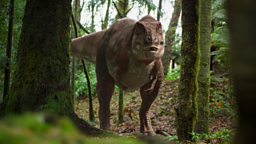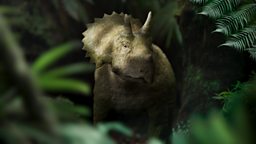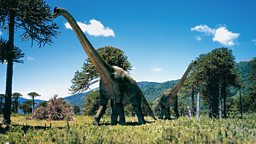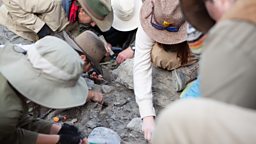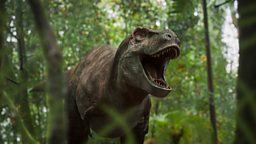Pipestone Creek: The river of death and discovery
by Emily Bamforth, curator at the Philip J. Curry, Dinosaur Museum, in Wembley, Alberta, Canada
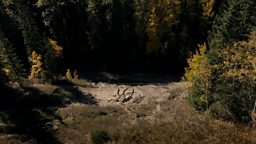
Pipestone Creek is a fairly deep valley, with a trickle of a stream at the bottom. That little stream did not make that valley. That valley was carved out by glaciers. But that’s not the reason we spend so much time there, it’s because Pipestone Creek is home to one of the densest dinosaur bone beds in the world. Which is especially strange because it's in an area that you wouldn't expect to find dinosaurs. This is literally in the middle of a forest.
Pipestone Creek is home to one of the densest dinosaur bone beds in the world.
The Pipestone Creek bone bed is what we call a monodominant bone bed, which means that it's dominated by one species, which is found here and nowhere else in the world. The dinosaur is called Pachyrhinosaurus lakustai. Pachyrhinosaurus, the name, means "thick-nosed lizard", and that's a reference to the fact that instead of having a horn on their nose like a Triceratops would have, they have this huge bony mass that we call a boss, and Pachyrhinosaurus are really the only horned dinosaur that have that feature. Our species also has a spike in the middle of the forehead that we call the 'unicorn spike'. Technically, it's called the parietal spike, but we like the unicorn better. It sounds cooler. And one of the remarkable things about this species is that we know they move in these huge herds of animals.
The true scientific value of the Pipestone Creek bone bed, besides it being a new species, is that it represents a snapshot in time. It is a huge sample size of a single community of a single species, and this almost never happens in the fossil record, particularly with dinosaurs. So because of this, we can study things like individual variation, such as what makes one dinosaur in this community different from other dinosaurs.
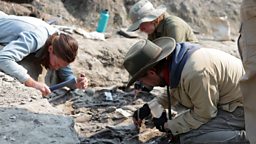
We have adults, babies and juveniles preserved in the bone bed, so we can look at what they look like when they're little, what they look like when they're adults and we can study their growth. That doesn't sound like a big deal, but in paleontology there are so few opportunities for us to do that. Because most dinosaur species - more than half - are known from a single specimen, we actually don't know a lot about individual variation in dinosaurs. We actually don't know a whole lot about their growth. We don't know a lot about their social structure. And so when we have somewhere like Pipestone Creek bonebed, where it's a snapshot of a single community, and it's a huge sample size, we can study all of these kinds of mysteries about dinosaurs that we very, very rarely have an opportunity to study.
we have over 7,000 fossils from an area about the size of a tennis court
The exciting thing about Pipestone is that the site was found more than 50 years ago. For now, we have over 7,000 fossils from an area about the size of a tennis court. But back in the nineties, palaeontologists working the site wanted to know the extent of the bone bed. So they did some drill cores behind the bone bed, and they found it extends for a square kilometre beyond our current excavations. At a density of 100 to 300 bones per square metre, if you extrapolate that back into the hill, that is potentially a hundred thousand animals. It's absolutely huge. The bone bed effectively will never run out, we'll probably run out of things to study before we run out of bones!
In this area of northern Alberta, we have the same density of dinosaur bones as they have in the more famous dinosaur localities like Dinosaur Provincial Park, which is one of the best Mesozoic dinosaur ecosystems preserved in the world. But because we don't have those big exposures of rock like the Badlands, our dinosaurs are harder to find. This is why it's exciting to be here, because this is the frontier of dinosaur palaeontology in Canada. We've only just started to scratch the surface in terms of what's out here. There's huge potential, it's just a matter of getting out and finding them. We know they're there. It's a really exciting place to be as a palaeontologist, right on that cutting edge of discovery!

